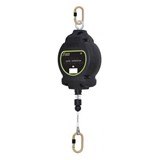The Top 10 growth
- Sugar Manufacturing - During the past five years, the Sugar Manufacturing industry has been buffeted by global demand, supply trends and world prices. In 2010, however, IBISWorld projects that the industry will be the big winner for growth – raking in $3.11 billion, an increase of 15.9% from 2009 revenue of $2.68 billion.
The good news follow the 2009 global sugar shortage – caused by adverse weather in key sugar cane growing regions, particularly Brazil – which has led to an increase in demand and an increase in sugar prices. Increased sugar consumption from developing nations and the use of sugar inputs to produce alternative fuel products such as ethanol have added to growing demand. Despite the expectation of demand growth throughout 2010, leading to an increase in industry revenue, employment is projected to fall by 1.5%.
Australia is currently one of the world's top five sugar exporters, exporting around 70% of its sugar supplies. Other key sugar exporters include Brazil, India, Thailand and the European Union. Top import nations include China, Canada, United States, New Zealand and India.
- Organic Farming - Demand for organic products in Australia and around the world has risen in recent years as consumers increasingly consider the health benefits and environmental impact of their food choices. The industry is projected to total $425 million in 2010, representing growth of 14.8% from 2009. IBISWorld expects industry employment to rise by 2.6% to 6,463 due to this growth in industry revenue.
On average organic goods remain more expensive than non-organic produce, but higher disposable incomes, greater awareness of environmental sustainability and an increase in the range of organic produce available will allow for continued industry growth.
As the green message grows in popularity, big business like McDonald's and Unilever have taken up the banner, sourcing environmentally friendly coffee and tea from plantations accredited by US environmental organisation, Rainforest Alliance. Coles Supermarket has also begun developing its private label Coles Organic Brand.
While green goods are certainly gaining ground, organically farmed products still represent less than 1% of the total value of grains, meat, horticulture and dairy produced in Australia – a figure well below the levels in other developed countries.
- Oil & Gas Production - IBISWorld projects oil production will decline in 2010, which will be more than offset by a rise in natural gas production, seeing the sector post 13.8% growth in 2010 to $37.3 billion – generating a 3.5% increase in employment.
In the coming year, the industry will benefit from higher international prices, increased production of natural gas from existing fields and the development of new fields.
Major liquid natural gas contracts signed in 2009 – including a $90 billion deal between Chevron and Tokyo Electric Power Company and a $50 billion deal between ExxonMobil and PetroChina – are expected to provide a significant boost to the industry, as will the Barrow Island and Gorgon projects.
- Institutional Building Construction - Centred on the construction of buildings where Australians learn, work, are healed, socialise, exercise, pray and seek justice, the Institutional Building Construction industry is expected to grow by 12% in 2010 to $9.4 billion, supported by increased government spending – especially on educational structures.
In the past two years, activity in the educational building market surged by about 40%. Growth will continue to be supported in 2010 by projects arising from the Australian Government's Economic Stimulus Plan, resulting in a 6.5% boom in employment.
IBISWorld also expects that healthcare-facility construction will remain strong in 2010, with several large-scale inner urban hospital projects already underway, including the Royal North Shore Hospital redevelopment in Sydney; the new Children's Hospital in Melbourne; the Gold Coast University Hospital in Queensland; and the Fiona Stanley Hospital expansion in Western Australia.
- Insulation Services - IBISWorld expects the Insulation Services industry to continue experiencing growth in the first half of 2010 as households take advantage of government subsidies like the Energy Efficient Homes program provided as part of economic stimulus packages.
Following substantial growth of 11.8% to $1.13 billion, and an 8.3% increase in jobs in 2010, demand is expected to drop off, however, as subsidies expire – resulting in zero growth in 2011.
- Health Insurance - Despite a rise in the Medicare levy surcharge thresholds, IBISWorld predicts that an increasing number of Australians will take out private health cover in 2010. This, combined with a rebound in investment income for insurers, will cause the industry to post growth of 10.3% to $14.6 billion this year, while employment is expected to experience slight growth at 0.6%.
There are several factors leading more Australian's to take out private health insurance, including rising incomes, tax advantages and an ageing population. While premium prices are expected to increase as the number of payouts continues to rise, population growth and rising incomes means it has become more tax effective for most people to have some type of health insurance.
- Alternative Health Therapies - Alternative health therapies and holistic approaches to medicine have enjoyed increased popularity in recent years. Therefore, IBISWorld projects that the industry will experience growth of 5.1% in 2010 to total $3.36 billion. Growing demand should increase industry employment, which is expected to grow by 4.2% in 2010.
Growth in alternative health therapies has been encouraged by better acceptance and understanding of treatments, rising consumer focus on health due to Australia's ageing population and increased coverage of alternative health therapies by private health insurance providers.
- Online Shopping - As access to technology improves, and Australia's overall skill in using it grows, time-poor bargain hunters will continue to flock to e-tailers to meet their shopping needs. Improvements in online-store efficiency, reliability and security are expected to drive industry growth of 4.7% in 2010 to reach $20 billion – resulting in a 2.9% growth in employment.
Within Australia, online sales currently represent just 5.5% of all retail sales, well below levels in the United States and Britain. Current lower levels are partly due to the fact that Australian retailers have been slow to offer online sales, using the internet solely as a marketing tool. If Australian retailers do not embrace online sales, they could lose billions of dollars in potential sales to specialist stores and foreign competitors.
- Weight Loss Services - IBISWorld projects that the Weight Loss Services industry will grow by 4.6% in 2010 to be worth $768 million, generating a 2.7% increase in employment. The sector is expected to continue to grow in 2011, as rising obesity and growing public awareness of subsequent health issues lead more Australians to invest in weight loss. The increasing availability of weight loss drugs and supplements and the growing acceptance of surgery (such as lap band surgery) as a treatment will also increase demand.
- Baby Products - Over the past five years, there has been strong growth in high-end baby products, as first-time parents in their late 30s and early 40s buy up big for their newborns. This trend will aid industry growth, which is forecast to grow by 3.3% to $4.17 billion in 2010 – generating a 2.7% increase in employment.
Rising birth rates to older parents and a focus on buying quality items only, has given rise to huge growth in businesses churning out high-end baby products. Key areas of growth include premium kids clothing, with celebrated fashion designers such as Collette Dinnigan and Fiona Scanlan launching children's lines, as well as the continued expansion of 'mini-me' branding.
The Top 5 decline
- Image Processing and Printing Services - The digital revolution and the advent of digital cameras, home photo-printing equipment, digital photo frames, and electronic image storage have led to the Image Processing and Printing Services industry suffering significant losses. IBISWorld forecasts that revenue will fall by 5.7% in 2010 to $548 million.
In the past 15 years, since the first digital cameras were sold in the United States, photography and related industries have undergone a radical change – one which has seen not only consumers switch to digital, but has also seen professional and amateur photographers trade in their film cameras, which require processing services, for digital technology.
In 2010, IBISWorld projects the growing popularity of digital will cause the total number of image processing and printing establishments in Australia to fall by 5%, and the total number of employees employed by the sector to fall by 3.7%.
- Multi-Unit Apartment & Townhouse Construction - Despite a shift in lifestyle and residential preferences toward higher-density housing, IBISWorld expects multi-unit apartment and townhouse construction will contract sharply in the coming year, falling by 5.2% in 2010 to $6.6 billion – seeing employment drop 3.9%.
Restricted access to credit for developers – caused by the global financial crisis – has dampened new apartment and townhouse development, and IBISWorld expects rising interest rates will make financing even more difficult in 2010. Compounding this, IBISWorld expects that the interest-rate rises in October, November and December of 2009 – and talk of additional rate rises for 2010 – will discourage some buyers, reducing overall demand.
- Wired Telecommunications Carriers - As the number of wireless options increases, more consumers are switching from wired to un-wired services as they seek cost savings, such as freedom from line-rental expenses and better-value plans offered by mobile capped pricing plans and naked DSL internet access. Therefore, IBISWorld expects that in 2010 an industry revenue contraction of 4.6% (to $12 billion) and a 3.1% decrease in employment.
The proliferation of mobile phones, the entrance of smart-phones into the market, the increase in wireless internet options, the boom in social networking, and the development of voice over internet protocol have resulted in a decrease in demand for fixed land lines.
- Video Hire Outlets - Australians are spoiled for choice when it comes to watching movies. Increasing electronic distribution of video content and a greater volume of both pay- and free-to-air TV programming has resulted in a long-term downward trend for video hire outlets. In 2010, IBISWorld projects industry revenue to decrease by 3.7% to $524 million and the number of jobs in the industry to fall by 1.5%.
IBISWorld expects that by 2015 the industry will be half the size it was in the early 1990s, as competition from pay TV, digital TV, and internet streaming and downloads – both legal and illegal – increases.
- Travel Agency Services - IBISWorld predicts another poor year for travel agents following a further decline in international tourism and the rapid growth in online booking sites. Revenue is tipped to contract by 1.9% in 2010 to $2.71 billion, while employment will fall by 1.3%.
International visitor numbers are expected to remain poor in 2010 as difficult economic conditions prevail in the United States, United Kingdom and Japan. In addition, the rapid growth of online booking sites, which accounted for around $24 billion in 2009 – a third of total tourism revenue – is expected to adversely affect travel agent revenue in 2010 and beyond.
Usage of online services such as lastminute.com, webjet.com.au and wotif.com have shown particularly strong growth in 2009 as tourism operators offered heavy discounts to online bookings to prop up lagging visitor numbers.







